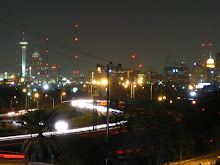
Dionicio Rodriguez was born in 1891 and was a Mexican-born artist and architect. With little formal education, he began, at the age of fifteen, to work for a foundry in Mexico, and his earliest work can be seen at Chapultepec Castle and the President’s Palace in Mexico City. He later served with an Italian artist, Robles Hill, who produced imitation rocks, caverns, ruins, and ancient buildings.

He was known for his unique style of concrete construction that imitated wood. Gates, benches and artificial rock formations were created by the artist to invite visitors to rest or to explore the landscape.

One of his major works of art, the Crystal Shrine Grotto and sculptures at the Memorial Park Cemetery in Memphis, Tennessee, is listed in the National Register of Historic Places.
Rodriguez’s move to Laredo, Texas, about 1910 was undoubtedly influenced by the general political unrest in Mexico at the time. After Rodriguez moved to San Antonio, in the mid-1920s, Dr. Aureliano Urrutia, a physician to the president of Mexico (who had an house in what is now Brackenridge Park next to the AT&T building on Broadway), introduced him to Alamo Cement Company, and he worked for them through the late 1920s. It was during this time that he used his talent to leave his mark on San Antonio.
He worked in eight different states from 1924 through the early 1950s but spent much of his early career in San Antonio, where several of his creations have become beloved landmarks. More than a dozen of Rodríguez's works have been included on the National Register of Historic Places.

If you have visited Brackenridge Park, you have undoubtedly noticed a strange "wood" bridge right at the Hildebrand entrance to the park. This was one of his creations.

As was the Japanese Tea Garden at which he replicated a Japanese Torii gate at the entrance to the gardens.

Also another place you could have seen his work would be at Broadway and Patterson where there is a bus stop that is commonly called the "three tree stop".
Other works by Dionicio Rodríguez can be seen in San Antonio at the Museum of Art (200 W. Jones Ave.), and at St. Anthony of Padua Shrine (100 Peter Baque Rd.). Other works in Texas include a gazebo now at Haven River Inn in Comfort (105 FM 473), and at Woodlawn Garden of Memories in Houston (1101 Antoine Dr.).

Rodríguez's most famous work outside of Texas is a stone gristmill (that was featured in the opening scene from Gone With the Wind) in T.R. Pugh Memorial Park in North Little Rock, Ark. Other pieces can be found in Clayton, N.M.; Memphis, Tenn.; Birmingham, Ala.; Cambridge and Detroit, Mich.; and Brentwood and Suitland, Md.
Rodriguez worked at various locations throughout the U.S. for more than thirty years. A long-ailing diabetic, Rodriguez spent his last days in San Antonio and died here on December 16, 1955. He is buried in San Antonio’s San Fernando Archdiocesan Cemetery.
So next time you pass one of these structures, take a little extra time to study it and realize how lucky we are to live in a city that has been touched so uniquely by such a prolific artist.
Full Bio of Dionicio Rodriguez
Capturing Nature: The Cement Sculpture of Dionicio Rodriquez

1 comment:
Wow. Very interesting. So that bridge at Brackenridge is nearing 100 years old? Woah.
Post a Comment